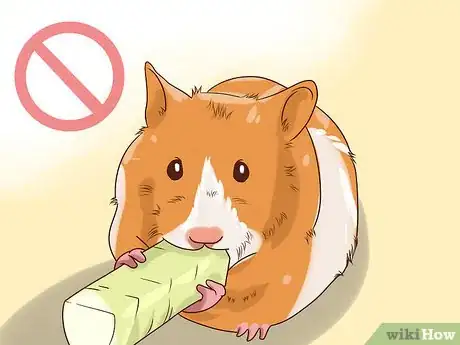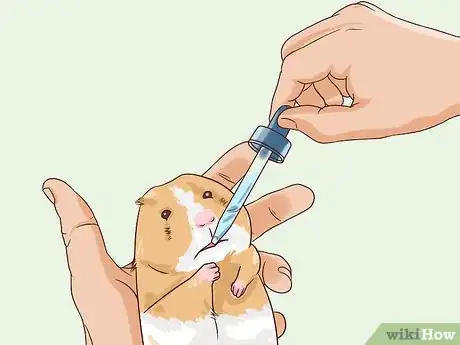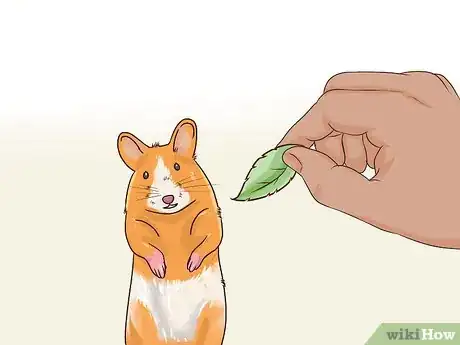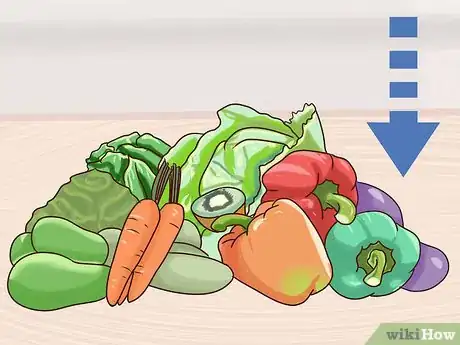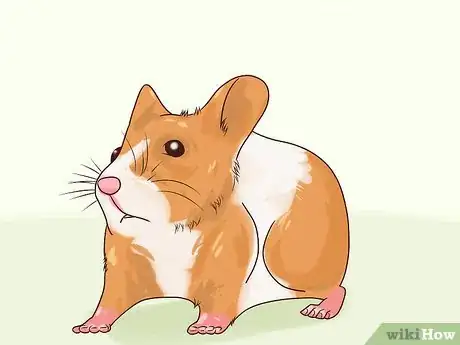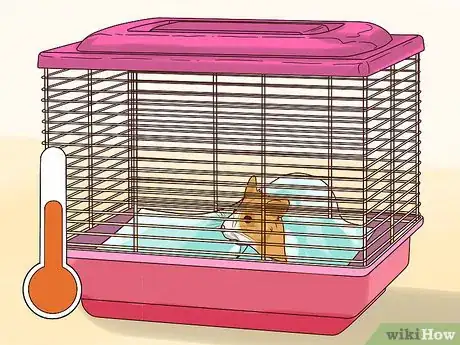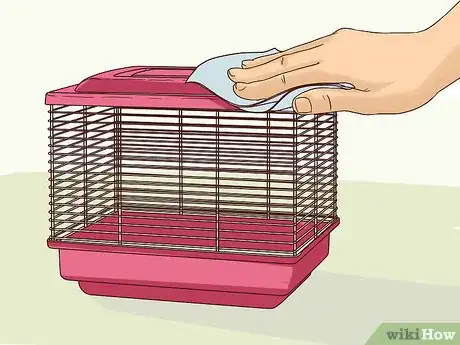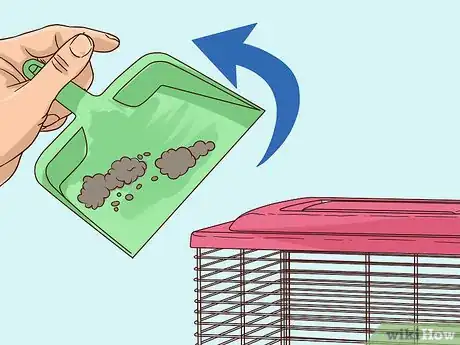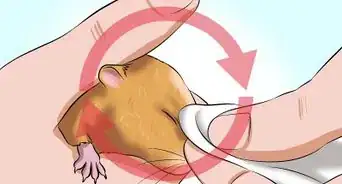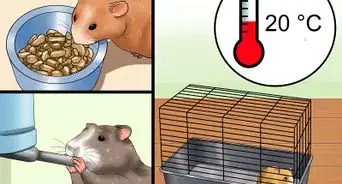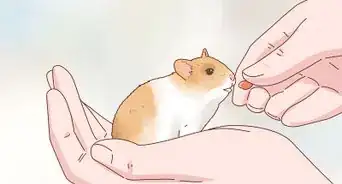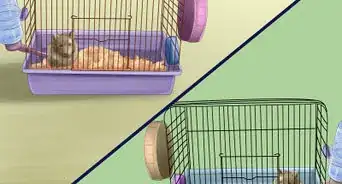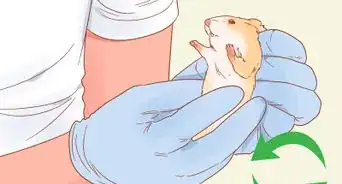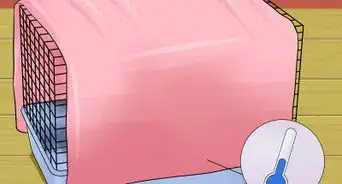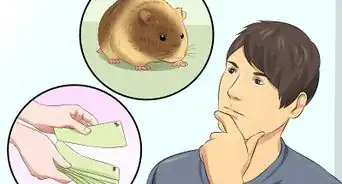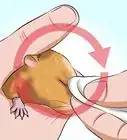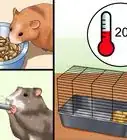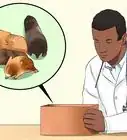This article was co-authored by Pippa Elliott, MRCVS. Dr. Elliott, BVMS, MRCVS is a veterinarian with over 30 years of experience in veterinary surgery and companion animal practice. She graduated from the University of Glasgow in 1987 with a degree in veterinary medicine and surgery. She has worked at the same animal clinic in her hometown for over 20 years.
There are 9 references cited in this article, which can be found at the bottom of the page.
wikiHow marks an article as reader-approved once it receives enough positive feedback. In this case, 95% of readers who voted found the article helpful, earning it our reader-approved status.
This article has been viewed 68,566 times.
In general, hamsters are very healthy animals. However, they can develop diarrhea due to several reasons, such as eating too many vegetables. If you notice signs of diarrhea in your hamster (soft, watery, light-colored feces), start treatment for the diarrhea.[1] Changing your hamster's diet and making its cage clean and comfortable will help resolve your hamster’s diarrhea.
Steps
Changing Your Hamster’s Diet
-
1Stop feeding your hamster fresh vegetables. In small quantities, fresh vegetables are part of a healthy, balanced hamster diet.[2] They are very nutritious and have extra moisture that keeps hamsters well hydrated. Eating too many vegetables, though, can cause diarrhea because of too much moisture. To help stop your hamster's diarrhea, take fresh vegetables out of its diet. Feed your hamster only dry food (hamster pellets).[3]
- Hamster pellets are very nutritious, so you don’t have to worry about your hamster not getting enough nutrients when it eats only dry food.
-
2Give your hamster fresh water. Like people, hamsters become dehydrated if they have diarrhea. Make sure your hamster has plenty of fresh, cool water to drink so it can rehydrate itself.[4] If you notice your hamster isn’t drinking its water, give it water by hand:[5]
- Fill a small eye dropper with cool water. Holding your hamster, put the eyedropper in the corner of its mouth. Squeeze a few drops of water at a time into your hamster’s mouth.
- Talk with your vet about how often you should give your hamster water by hand.
Advertisement -
3Consider feeding your hamster raspberry bush leaves or arrowroot. Raspberry bush leaves and arrowroot can help a hamster recover from diarrhea.[6] Talk with your vet before feeding either of these items to your hamster. Your vet can advise you on how much of these items to give your hamster to treat the diarrhea.
-
4Reintroduce vegetables after the diarrhea stops. After a day or two without vegetables, your hamster’s diarrhea should stop. Don’t start refeeding vegetables right away, though. To allow your hamster to fully recover, wait one to two weeks before adding vegetables back to the diet.[7]
- When you feed your hamster vegetables, make the portion size equal to a few raisins. Feed the vegetables once a day.[8]
-
5Watch for improvement. With normal cases of hamster diarrhea, the hamster will look otherwise healthy (no hunching over or loss of appetite) and be completely healthy again after a few days of eating a dry food-only diet.[9] However, with more severe diarrhea, a hamster will not improve after a day or two. In fact, the diarrhea may get worse and the hamster may look sicker (dull and sunken eyes, ruffled coat, weight loss).
Managing Your Hamster’s Environment
-
1Keep your hamster’s cage warm. While you treat your hamster for diarrhea, make sure its cage stays warm (70‒85 degrees Fahrenheit/21‒29 degrees Celsius).[11] Normal room temperature is around 72 degrees Fahrenheit (22 degrees Celsius), so keep your hamster’s cage in a non-drafty room that’s at room temperature. You could also place a heating pad (available pet stores) under the cage using these suggestions:
- Place the heating pad under a small portion of the cage so your hamster can move away from the heat when it wants to.
- After the heating pad has been on for a while, touch the bedding to see if it is warming up.
- Do not use a human heating pad, since these pads automatically shut off and can leave your hamster feeling cold.
-
2Clean your hamster’s cage. This is important if your hamster has severe diarrhea from Wet Tail. A dirty cage can have a buildup of bacteria or other harmful organisms.[12] Cleaning the cage will remove disease-causing organisms. Below are cleaning suggestions:[13]
- Each day, clean the food bowl and water bottle with hot soap and water. Refill the food and water.
- Change out the bedding weekly. Leave a small section of old bedding in the cage so your hamster recognizes its scent on the bedding.
- Once a week, remove everything from the cage. Clean and disinfect the cage and plastic toys.
-
3Remove uneaten food. Each day, check your hamster’s cage for uneaten food. Remove and discard this food. If you leave the food in the cage, it could spoil and become an easy place for bacteria and mold to grow.[14] Bacteria and mold could make your hamster very sick.
Warnings
- The dehydration due to Wet Tail’s diarrhea can be fatal after just a few days.[18]⧼thumbs_response⧽
- Other than dehydration, diarrhea can have bad consequences, such as sores around the rear end, re-ingestion of bacteria (hamsters eat their own poop), and anemia (not enough red blood cells).[19]⧼thumbs_response⧽
References
- ↑ http://www.petwebsite.com/hamsters/hamster_diarrhoea.asp
- ↑ http://www.smallanimalchannel.com/hamsters/hamster-diet/basic-hamster-diet.aspx
- ↑ https://www.caringpets.org/how-to-take-care-of-a-hamster/illnesses/diarrhea/
- ↑ http://www.yourpethamster.com/care/health-problems#diarrhea
- ↑ https://www.caringpets.org/how-to-take-care-of-a-hamster/illnesses/diarrhea/
- ↑ http://www.petwebsite.com/hamsters/hamster_diarrhoea.asp
- ↑ http://www.petwebsite.com/hamsters/hamster_diarrhoea.asp
- ↑ http://www.humanesociety.org/animals/hamsters/tips/hamster_feeding.html?referrer=http://www.humanesociety.org/animals/hamsters/tips/hamster_feeding.html
- ↑ https://www.caringpets.org/how-to-take-care-of-a-hamster/illnesses/diarrhea/
- ↑ http://www.petwebsite.com/hamsters/hamster_diarrhoea.asp
- ↑ https://www.caringpets.org/how-to-take-care-of-a-hamster/illnesses/diarrhea/
- ↑ https://www.caringpets.org/how-to-take-care-of-a-hamster/illnesses/diarrhea/
- ↑ http://www.pets4homes.co.uk/pet-advice/caring-for-your-pet-hamster.html
- ↑ http://www.netvet.co.uk/hamsters/diarrhoea.htm
- ↑ http://www.netvet.co.uk/hamsters/diarrhoea.htm
- ↑ http://www.petwebsite.com/hamsters/hamster_diarrhoea.asp
- ↑ http://www.merckvetmanual.com/mvm/exotic_and_laboratory_animals/rodents/hamsters.html
- ↑ https://www.caringpets.org/how-to-take-care-of-a-hamster/illnesses/wet-tail-disease/
- ↑ http://www.netvet.co.uk/hamsters/diarrhoea.htm
About This Article
To treat diarrhea in hamsters, try temporarily eliminating fresh vegetables from your hamster's diet since too many vegetables can cause diarrhea. Also, make sure your hamster has access to fresh, clean water so it doesn't become dehydrated. After a day or two of eating just dry food, your hamster should improve. If it doesn't, take it to see a vet since it could be suffering from something more serious. For more advice from our Veterinary co-author, like how to keep your hamster comfortable while it has diarrhea, scroll down!
